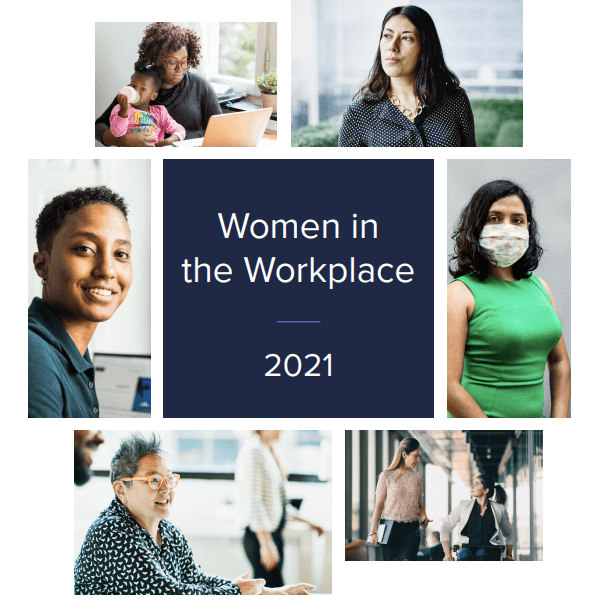Number of Women-Owned Employer Firms Increased 0.6% From 2017 to 2018
Young women are out-earning young men in several U.S. cities
Women in the United States continue to earn less than men, on average. Among full-time, year-round workers in 2019, women’s median annual earnings were 82% those of men.
The gender wage gap is narrower among younger workers nationally, and the gap varies across geographical areas. In fact, in 22 of 250 U.S. metropolitan areas, women under the age of 30 earn the same amount as or more than their male counterparts, according to a new Pew Research Center analysis of Census Bureau data.
Women in the Workplace 2021
Women in the Workplace is the largest study on the state of women in corporate America. In 2015, LeanIn.Org and McKinsey & Company launched the study to give companies insights and tools to advance gender diversity in the workplace. Between 2015 and 2021, over 750 companies participated in the study, and more than a quarter of a million people were surveyed on their workplace experiences. This year, we collected information from 423 participating organizations employing 12 million people, surveyed more than 65,000 employees, and conducted
interviews with women of diverse identities, including women of color,2 LGBTQ+ women, and women with disabilities. Our 2021 findings focus on the impact of the COVID-19 pandemic and the growing emphasis on diversity, equity, and inclusion on the experiences of women and the state of work more broadly.
Modernizing U.S. Labor Standards for 21st-Century Families
Women now make up almost half the U.S. workforce. Despite the central role women play in the U.S. economy, our labor laws
and institutions do little to address the various ways in which women are held back at work. This not only hampers women’s
economic well-being, but also has implications for U.S. productivity, labor force participation, and economic growth. In this
paper, we propose policies aimed at boosting women’s economic outcomes: paid family leave, fair scheduling, and combatting
wage discrimination. We show how enacting carefully designed policies in these categories will better address the challenges of
today’s labor force, enhance women’s economic outcomes, and provide benefits for the national economy.
Why Men Still Get More Promotions Than Women
Though companies now invest heavily in mentoring and developing their best female talent, all that attention doesn’t translate into promotions. A Catalyst survey of over 4,000 high potentials shows that more women than men have mentors—yet women are paid $4,600 less in their first post-MBA jobs, hold lower-level positions, and feel less career satisfaction.
The Sponsor Dividend: Key Findings
Through both hard data and in-depth interviews with sponsor/protégé pairs, this research showcases the vantage point of the sponsor—including common stumbling blocks and paths to success. The Sponsor Dividend also shows how employers can intentionally build sponsorship, from the initial stages, to becoming an embedded part of company culture.









